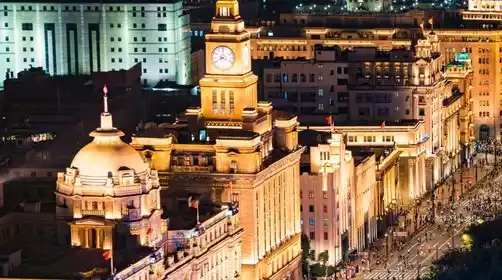Day 1 Yu Garden → Asia Building → Shanghai Club Building → HSBC Building → China Merchants Steamship Company → Customs Building → Peace Hotel → Bank of China Building → Yuanmingyuan Road → Waibaidu Bridge
All day
【Meeting Time】3:50 PM - 4:00 PM
【Meeting Place】Exit 1 of Yuyuan Subway Station
【Time】(full journey within 3 hours)
Our first stop is Yu Garden, located in the northeast of Shanghai's Old Town, adjacent to the Shanghai Old City God Temple. It is a classical garden in the south of the Yangtze River, built during the Jiajing and Wanli periods of the Ming Dynasty. The garden houses Yulinglong, one of the three famous stones in the south of the Yangtze River, and Dianchun Hall, the headquarters of the 1853 Small Knife Society uprising. Ancient people praised Yu Garden as "the most beautiful garden in the southeast" and "the most famous garden in the southeast."
After admiring the distinctively Chinese exterior of Yu Garden and the City God Temple, we'll walk to the Bund International Architecture Complex on the Huangpu River to experience the dramatic visual contrasts. By comparing them on site, we'll understand the reasons for the differences in architectural design, and our journey through time will officially begin.
Journey along the Huangpu River and count every building in the Bund World Architecture Complex. Unlock the essence of Shanghai's Bund and don't miss a single one! These include but are not limited to:
Asia Building was built in 1913 by Macbeth Company. In 1917, the building was purchased by the British Asiatic Petroleum Company and named Asia Building. It is another reinforced concrete frame building after the Shanghai Club. Its successful design and construction played a certain role in promoting the development of modern architecture in the Bund to a higher level.
[HSBC Building] This place is called "a very exquisite building from the Suez Canal to the Bering Strait in the Far East." The bronze lion guards the house, the dome of the ancient Roman Pantheon is matched with Hong Kong granite and Baroque spires. The "mixed" style, from the inside out, the Shanghai Pudong Development Bank Building reflects the legend in reality, and is undoubtedly the most complete mark left by that era.
The Customs House is famous for its towering clock tower and large clock. The clock was first installed in the second half of the 19th century. Modeled after the clock of the Houses of Parliament in the UK, it was built in the UK and shipped to Shanghai for assembly. It is one of the world's most famous clocks, and its flagpole is the highest point of the Bund. Walking along the Bund, the sound of the bells of "The East is Red" rings out, leaving us with an unforgettable memory of the many events that have taken place here.
Peace Hotel, a landmark in Shanghai and a modernist building in the city's modern history, is China's first world-renowned hotel, hosting prominent figures from the financial and business communities, as well as international celebrities. For example, General George Marshall, President John Leighton Stuart, Lu Xun, and Soong Ching Ling all visited the hotel to meet with international friends like Charlie Chaplin and Bernard Shaw. Looking up at the dark green roof, one imagines the countless stories of the Sassoon family who once ruled this place...
After passing the [China Merchants Steamship Company] and the [Bank of China Building], we arrived at [Yuanmingyuan Road] at the source of the Bund. Yuanmingyuan Road is a small road running north and south, starting from Dianchi Road in the south and ending at Nan Suzhou Road in the north. It was built by the Shanghai Municipal Council in the 1860s. This road is home to many old buildings such as the Zhenguang Building, Hami Building, and Ampere Foreign Trade Company. Let your guide tell you the history of each of them.
Waibaidu Bridge, built in 1907, is a fully steel riveted bridge. It is the fourth bridge built at the same location at the mouth of Suzhou Creek since 1856. During the Anti-Japanese War, countless people fled Hongkou from it. Due to its rich history and unique design, Waibaidu Bridge has become one of the symbols of Shanghai.
Our enriching and rewarding "Bund International Architecture Complex" City Walk concluded successfully on Waibaidu Bridge. We look forward to seeing you again!
This tour offers exclusive pricing for groups of one, two, three, four to six, or seven or more. Please be sure to select the small group package that matches your number of participants. If you accidentally select the wrong option, a staff member will contact you by phone to confirm whether you wish to wait for additional participants to register or opt for the additional price for a separate small group.




